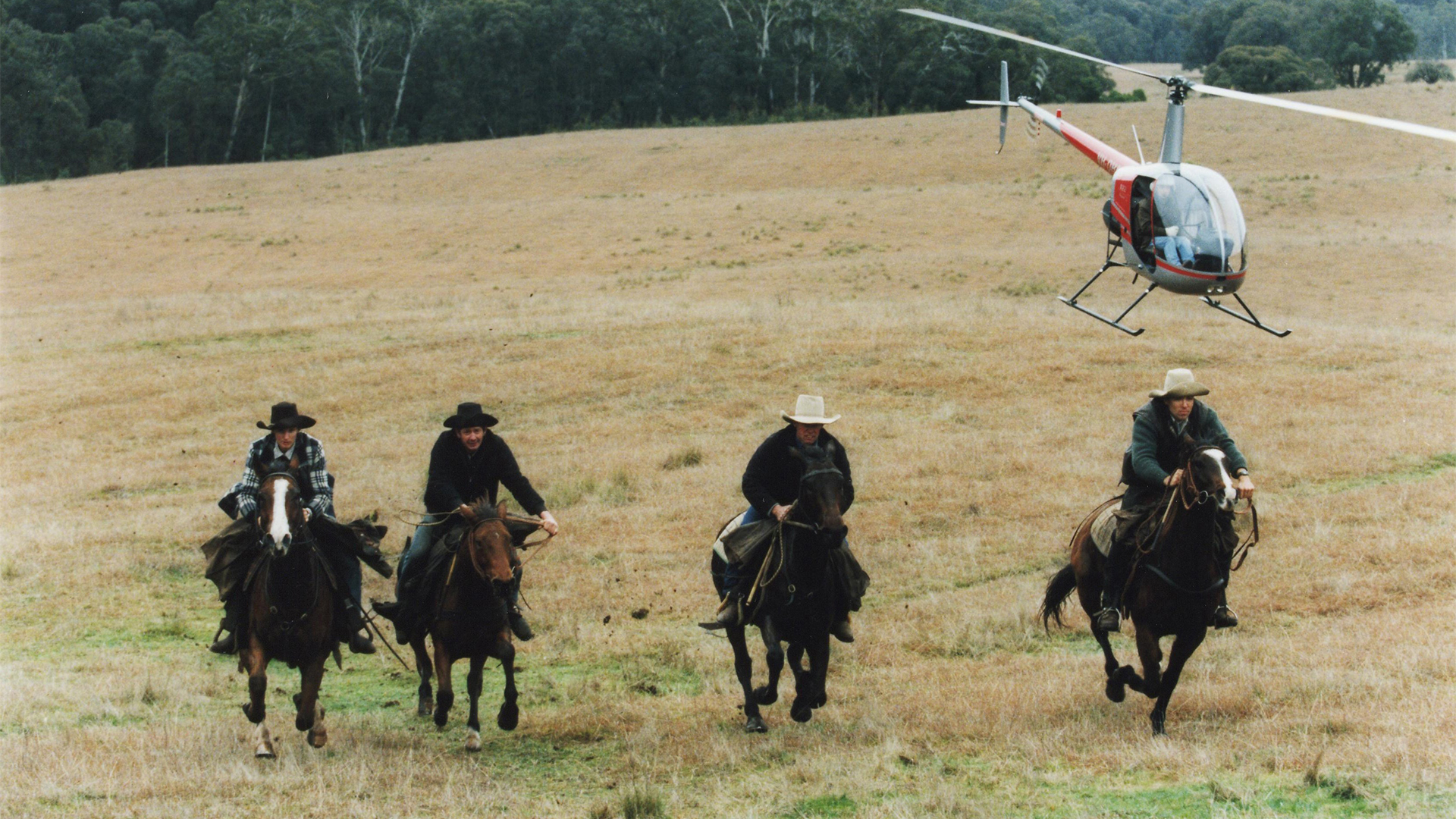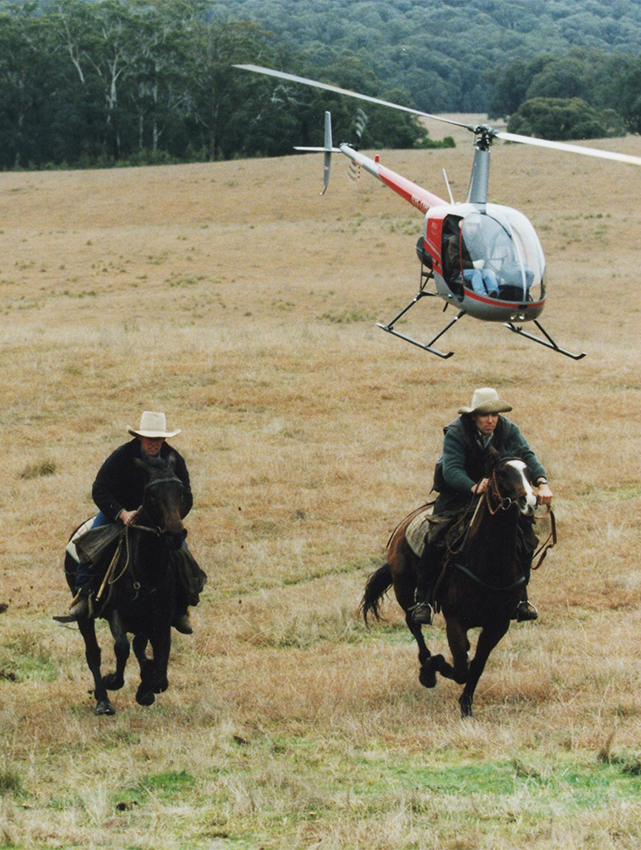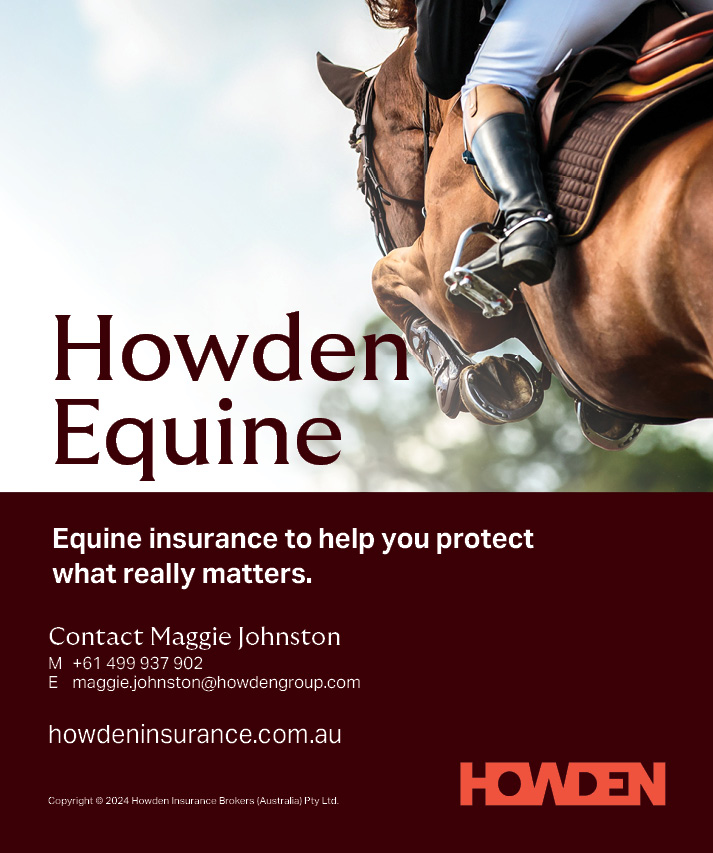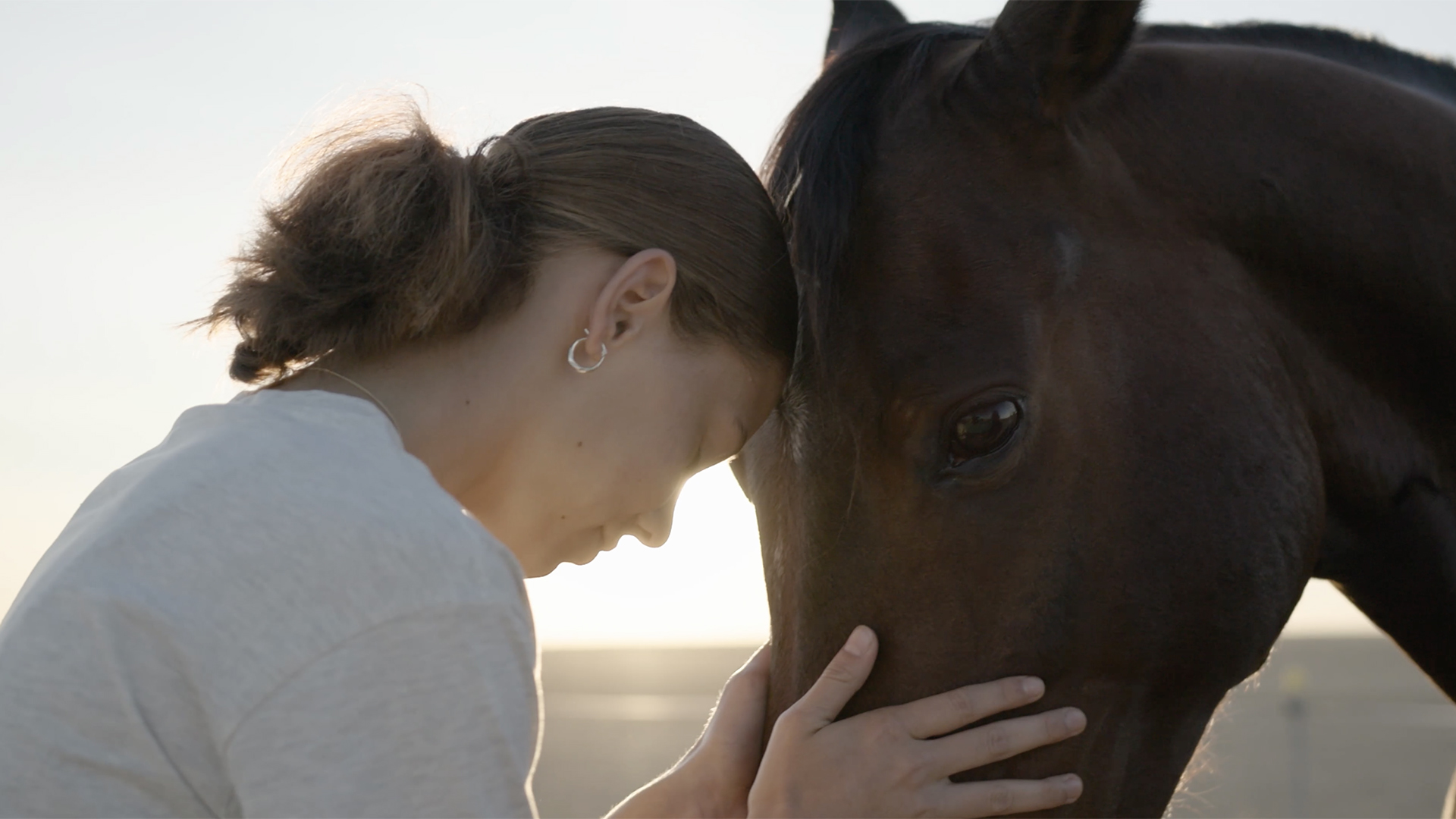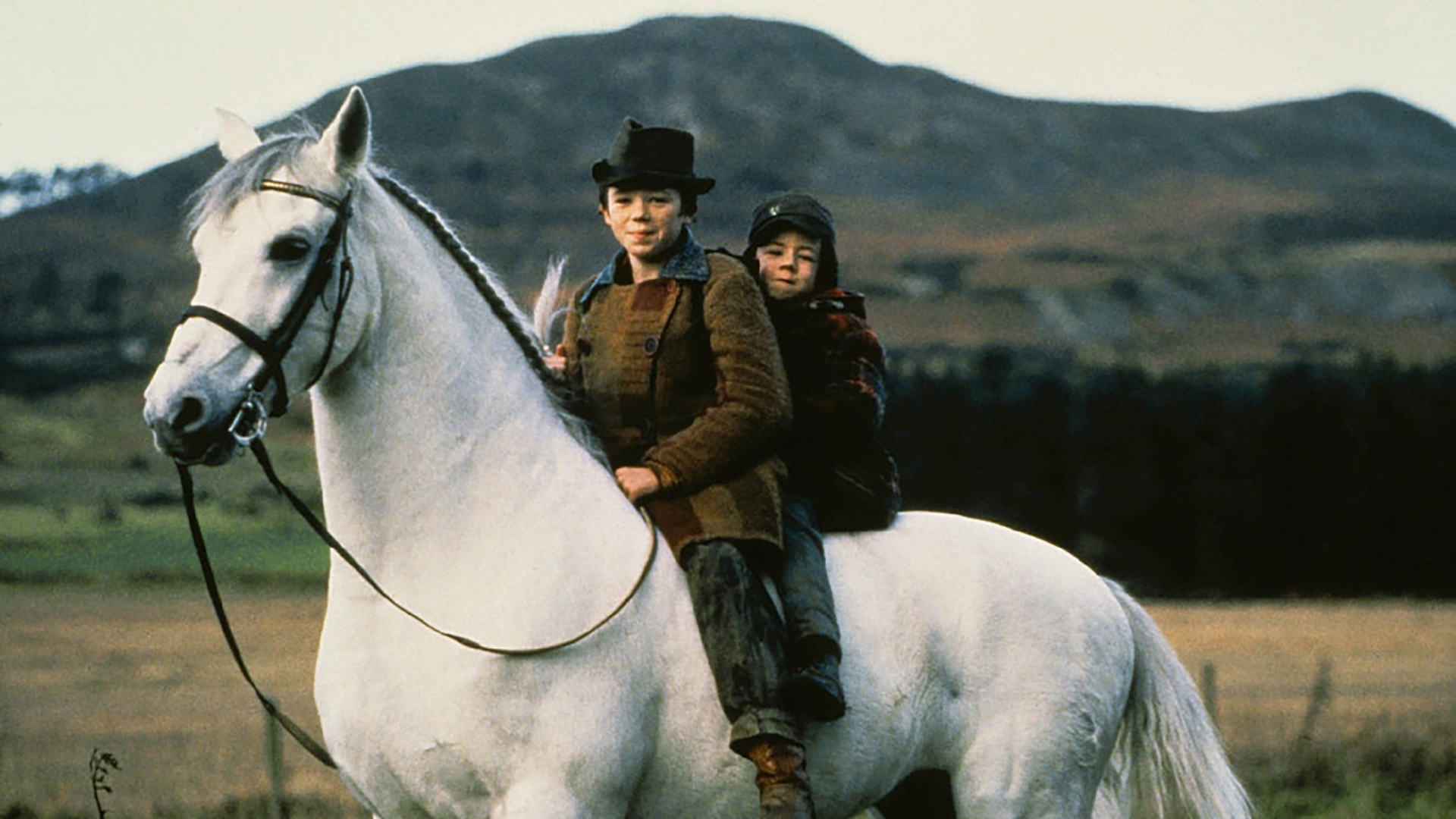Three thoroughbred foals are born on the same night in Australia. This is the story of their very different journeys to find a place in life.
‘HORSES: THE STORY OF EQUUS’ – 2002
Directed by Michael Caulfield
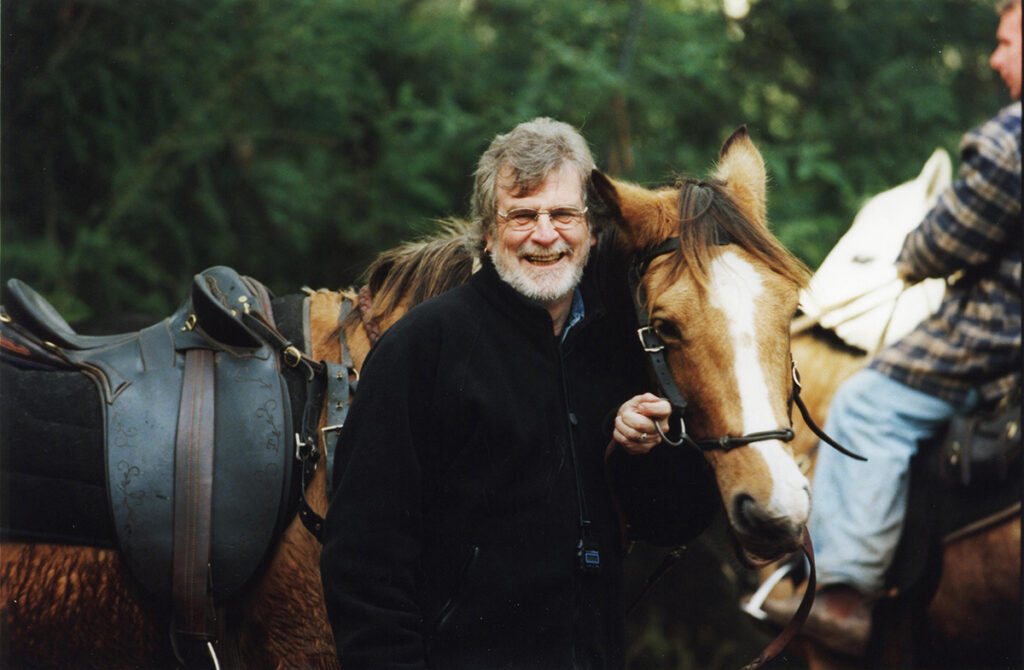
Director Michael Caulfield. Image supplied.
A great concept – but not a simple one to capture on film, especially when the format is IMAX. Cameras are cumbersome and expensive, and it can cost around $1,000 per minute to shoot and develop the 65mm film.
Australian director Michael Caulfield was no stranger to this process. Several years earlier he had made Africa’s Elephant Kingdom (1998), which explored an elephant clan’s search for food and water as seen through the eyes of one old bull.
Caulfield and his wife, Liz Butler, had spent a year on the border of Kenya and Tanzania in a research station amid two thousand elephants. The result was an internationally successful documentary.
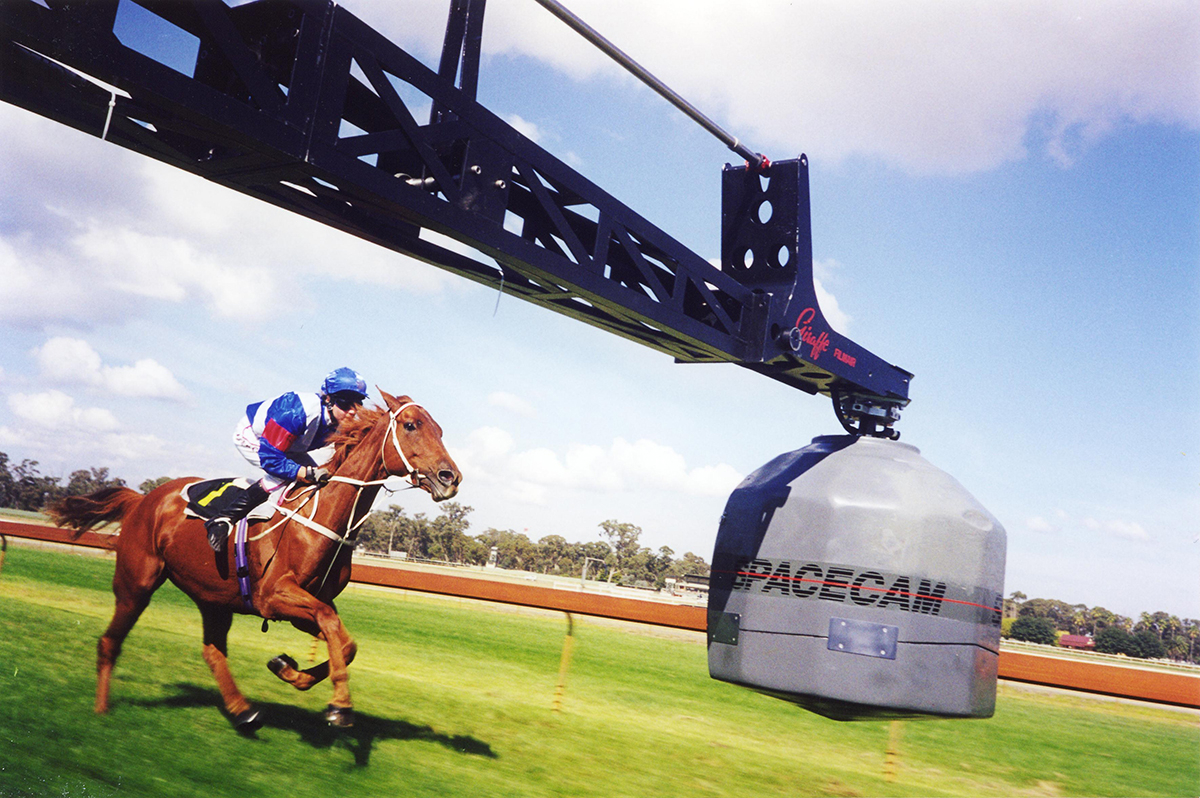
A camera on a ‘Spacecam’ mount filming the chestnut’s first race.
A young woman wanting an eventer buys the bay. He proves to be stubborn and temperamental and after dumping her at a water jump is sold to a movie horseman who stunt trains him. The bay excels at this work and at one stage drags the injured trainer from a burning barn.
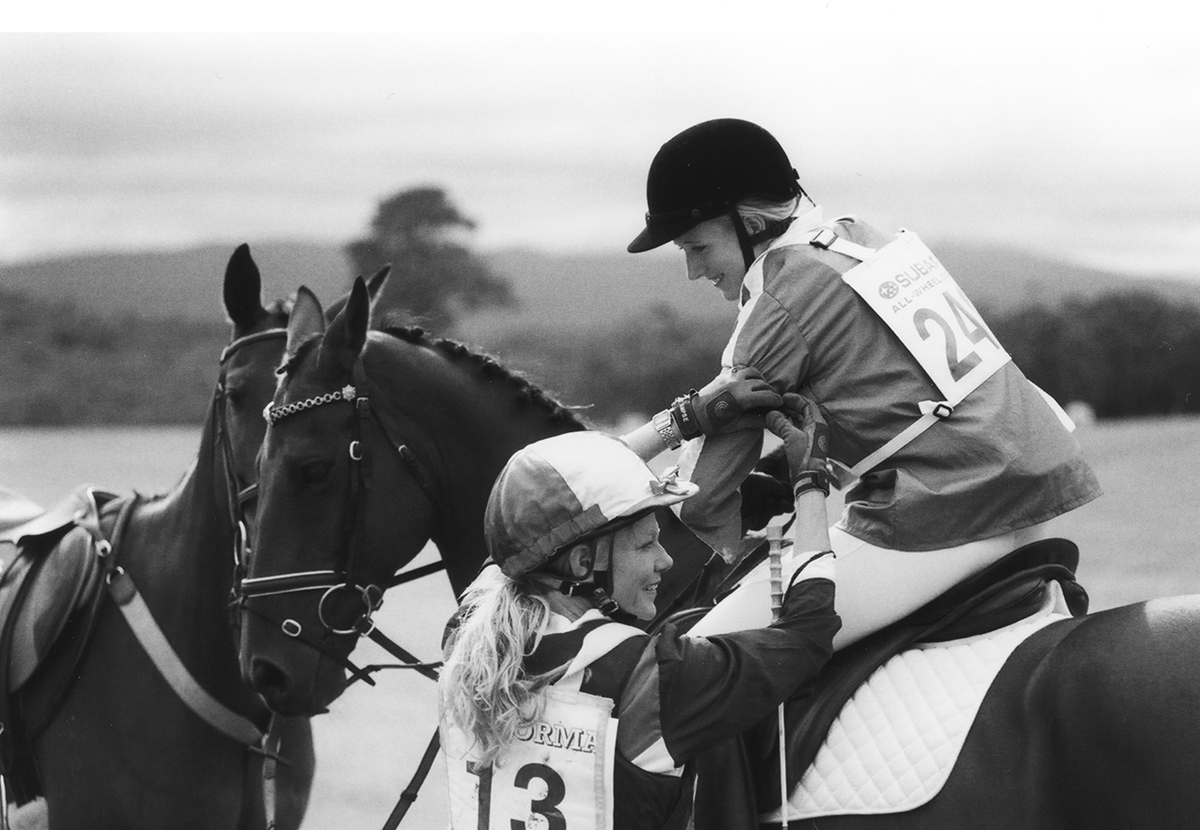
The bay horse starts out as an eventer before becoming a stunt horse.
The black colt goes to a stud farm. After an accident with the trailer in which he is being floated, he escapes to the nearby hills. He wanders through the spectacular high country, ultimately finding acceptance with a mob of bachelor stallions.
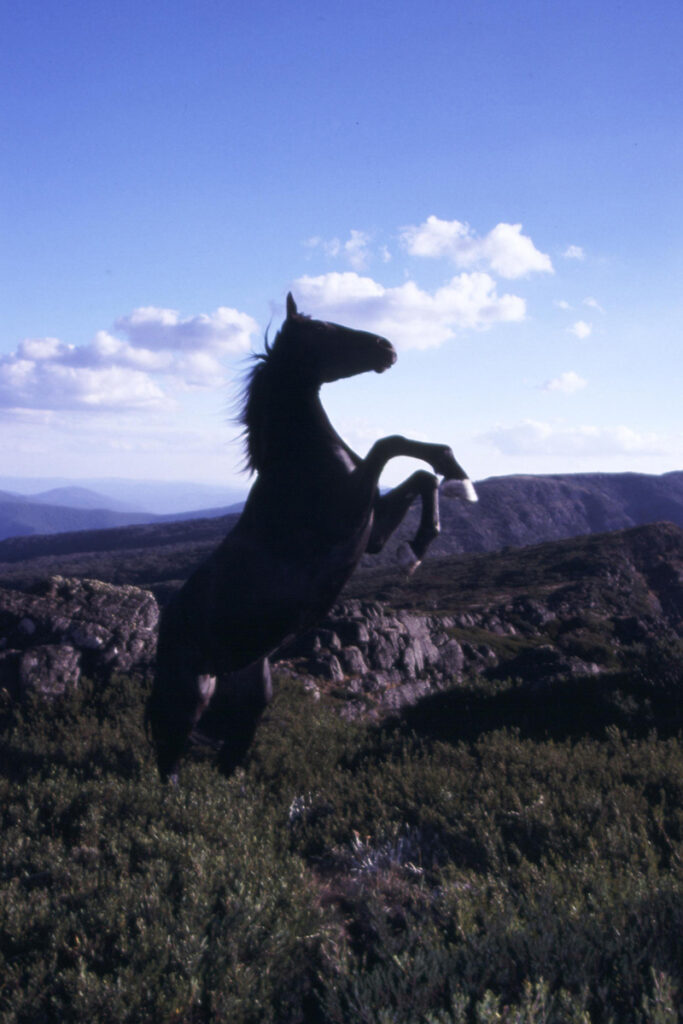
The black horse escapes and joins a mob of wild stallions.
Before shooting began extensive location surveys were undertaken and horse trainers found who specialised in film work.
“Because I’m from Victoria I convinced Michael that the majority of the areas we needed were close together in that state,” said producer Liz Butler, who has made 19 underwater films as well as the animal pictures. Prior to speaking to Equestrian Life, she had been cave diving in New Guinea.
“For Horses we used the high country, Trentham, the Yarra Valley, and Geelong for the racing sequences. In NSW we covered the birth of the three main characters at Coolmore and went to Goree Park Stud and the yearling sales at Inglis.”
“The IMAX camera sounds like a chaff cutter and was problematic when filming the foals – but we did it.”
Many a long night they would wait to be alerted that a foal was on its way.
“We’d jump in the car and were sometimes disappointed as we needed three solid colours and sometimes the newborn would have a big blaze, etc.”
Eventually they had what they needed.
“The three characters
were each played by
three different horses…”
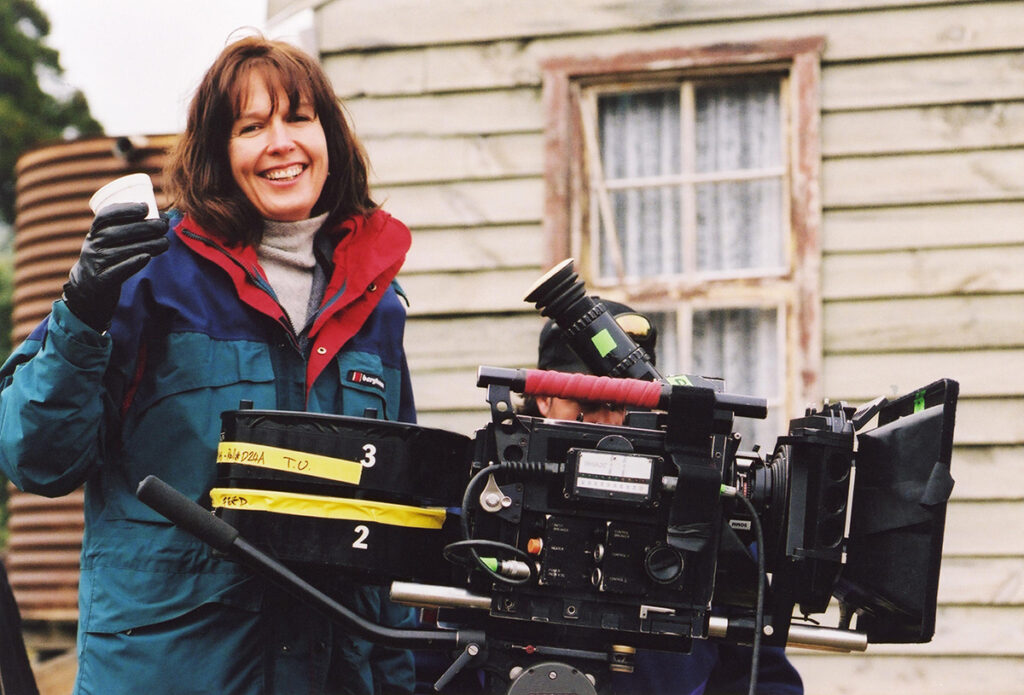
Producer Liz Butler.
“In all we used a hundred horses, which included a mob of wild ones handled by some local horsemen, but for those requiring specialised training we hired Evanne Chesson and Cody Rawson-Harris.”
This mother and son team has worked with animals on countless pictures here and overseas, selecting and schooling movie horses, teaching actors and choreographing action scenes.
Cody has fond memories of his time on the shoot. “I admired Michael – he was an interesting, inspirational man and he knew exactly what he wanted.
“The three characters were each played by three different horses depending upon what action was called for in the script.
“One of the blacks was an American Saddlebred/stockhorse (‘Blackapple’) whose specialty was long-distance liberty work; and the mare rearing on top of a cliff was an Irish Sport Horse/Friesian (‘Heidi’). She also worked in a five-horse stagecoach team which I drove. She’s one of my favourite horses ever. And ‘Tony’, a Friesian/Saddlebred, did most of the scenes through water.”
Two of the bays were used either in close-ups or long shots and the third was trained to jump through fire.
“‘Wally’ was bought cheaply at the sales,” recalled Cody. “He was a quarter horse/stockhorse who at first was girthy and a bit ‘broncy’. He became the stunt horse and we also trained him to work in harness.”
Because the director had cast him as the movie horse trainer, Cody had to perform a series of stunts in front of the camera including a fight scene, riding through fire and falling from a balcony, all of which he enjoyed immensely.
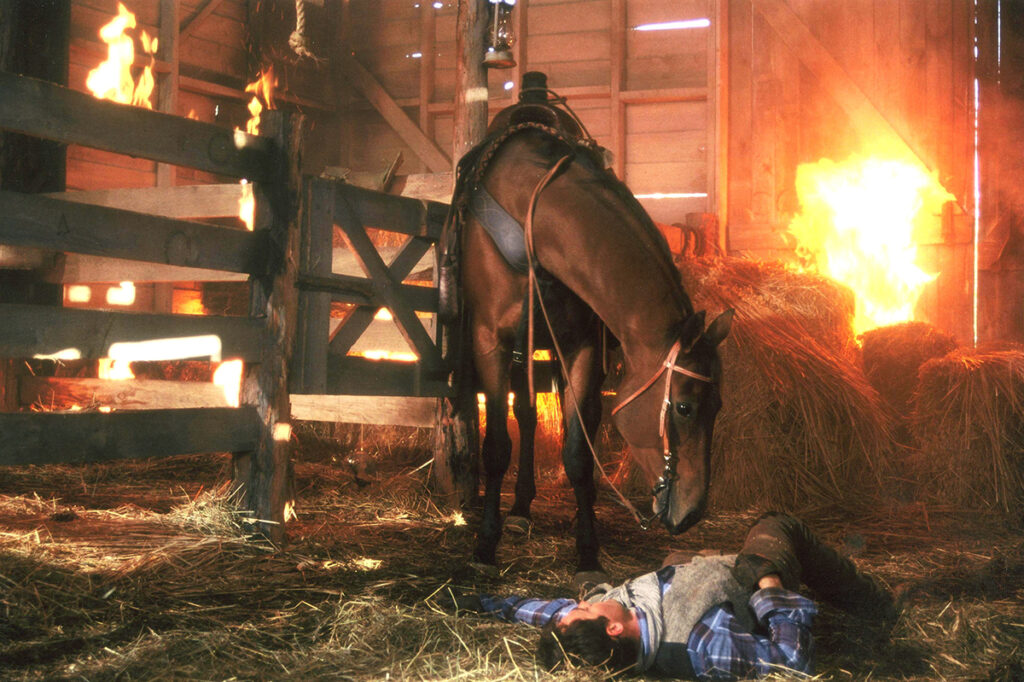
Stunt horse ‘Wally’ with trainer and stuntman Cody Rawson-Harris.
As the script called for some eventing scenes with the bay, a competitive rider was hired. Emily Anker from Wandin Riding Academy, now an EA Level 2 coach, used her own horse for these sequences.
The chestnut racehorse was portrayed by three thoroughbreds, one of which was specifically trained to lie down, act lame and confidently undergo all pre-racing preparation.
“I also choreographed the galloping sequences on a mocked-up track using toy horses and cars,” added Cody.
Over all of this plays a Celtic-themed score, with narration from Gabriel Byrne. A decade earlier the Irish actor had starred in Into the West, the subject of November’s Horses & Movies feature.
The music was composed by multi-talented Australian musician Roger Mason, who began his professional career with ‘Icehouse’ and ‘The Models’. For his innovative work on Horses, he won an APRA award for Best Music for a Documentary.
All of this was recorded in Sydney, but for the narration the filmmakers had to go to New York.
“It was ten days after 9/11 and Gabriel didn’t want to fly,” said Liz. “Our plane was almost empty; so were the streets. The taxi drivers thanked us for giving them some work to do. It was all very surreal. Ground Zero was still smouldering and there were thousands of photos of missing people pinned everywhere.”
Director Caulfield is also a musician and writer. From his home outside of Orange, NSW he is writing a score for a new production and finishing his seventh book, which has to be delivered by March 7. No horses are involved.
With a bit of searching, you can find and watch ‘Horses – The Story of Equus’ on DVD.
In the voice-over by Golden Globe winner Gabriel Byrne, we hear that man first domesticated horses 6,000 years ago, that Ice Age hunting nearly extinguished the primitive horse and that now there are sixty million horses across the globe. I enjoyed it as a piece of entertainment. The horses are all beautiful, are not abused in any way, and the valuable point is made – each horse is an individual and may not fit into the slot humans intend for it, but given a chance, if one career does not work out, it can be retrained for a useful and fulfilling life. – Mary Daniels, ‘DRESSAGE TODAY’ 2011
Next time in Horses & Movies, ‘Lean on Pete’ (2017) starring Charlie Plummer, Steve Buscemi and Chloe Sevigny. EQ
